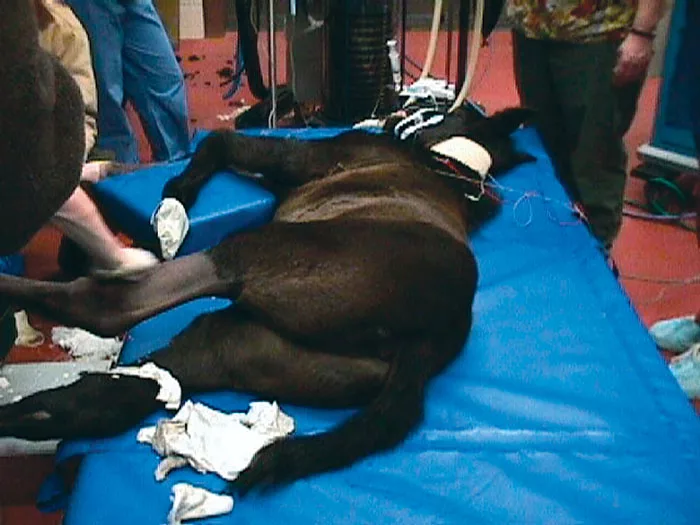American Farriers Journal
American Farriers Journal is the “hands-on” magazine for professional farriers, equine veterinarians and horse care product and service buyers.

LAYING DOWN ON THE JOB. After X-rays are taken, any needed corrective shoeing work should be done before surgery. Since shoeing work will likely be done while the foal is under general anesthesia, Nicholas Denson says this means you will likely be shoeing the foal laying down on at the equine hospital.
Most foals are born with some degree of deformity. However, most of these deviations are minor and correct themselves without any intervention by the farrier or equine veterinarian. In some cases, attempts to correct what appear to be deviations in a foal result in irreversible damage and deformity later in life.
The “ideal conformation” that textbooks portray doesn’t exist in the real equine world. All horses have some conformation faults, rotational anomaly or angular deviation. Yet horses who more closely resemble the “ideal” are normally the more successful horses.
However, it is becoming more noticeable that numerous foal deformities are severe enough to warrant corrective shoeing or surgery. Yet no corrective shoeing should be undertaken by a farrier without first consulting the attending veterinarian. Any corrective work must be slight, must be completed within 3 months of birth and remain on the hoof for a maximum of 14 days.
After radiographs are taken, needed corrective shoeing must be done prior to surgery. The shoeing work is best done when the foal has been placed under general anesthesia. This means you will be working with the foal laying down.
Most foals who require corrective shoeing will…